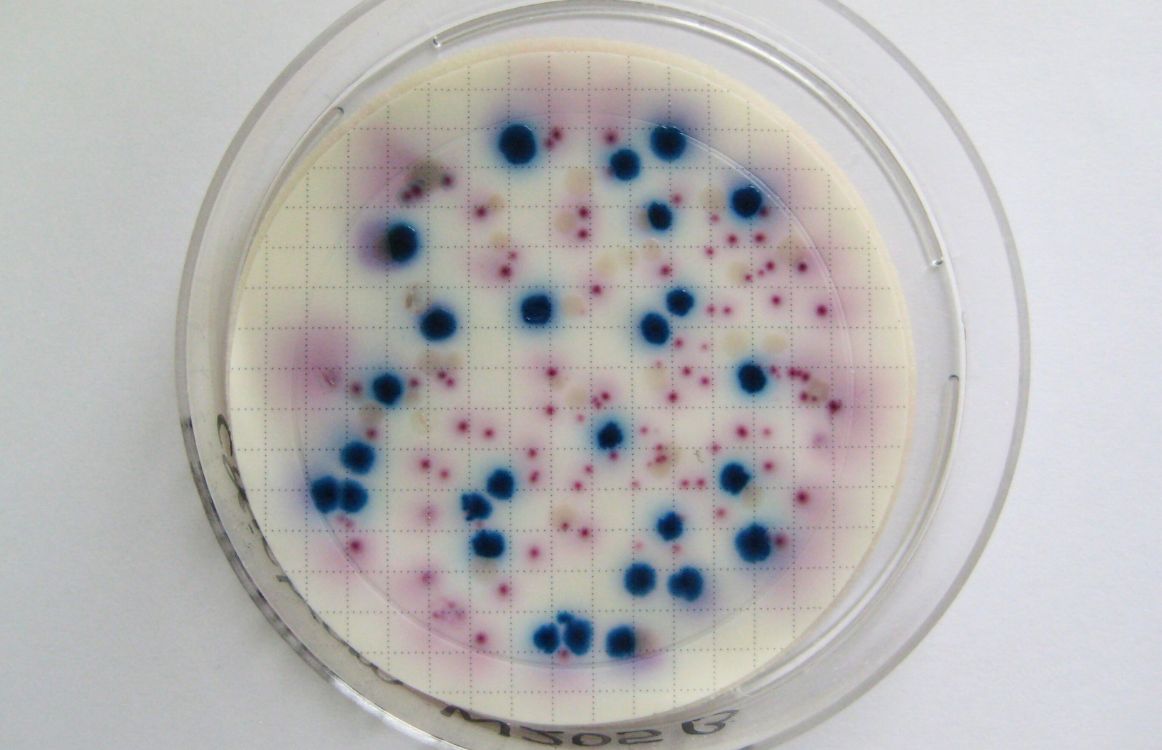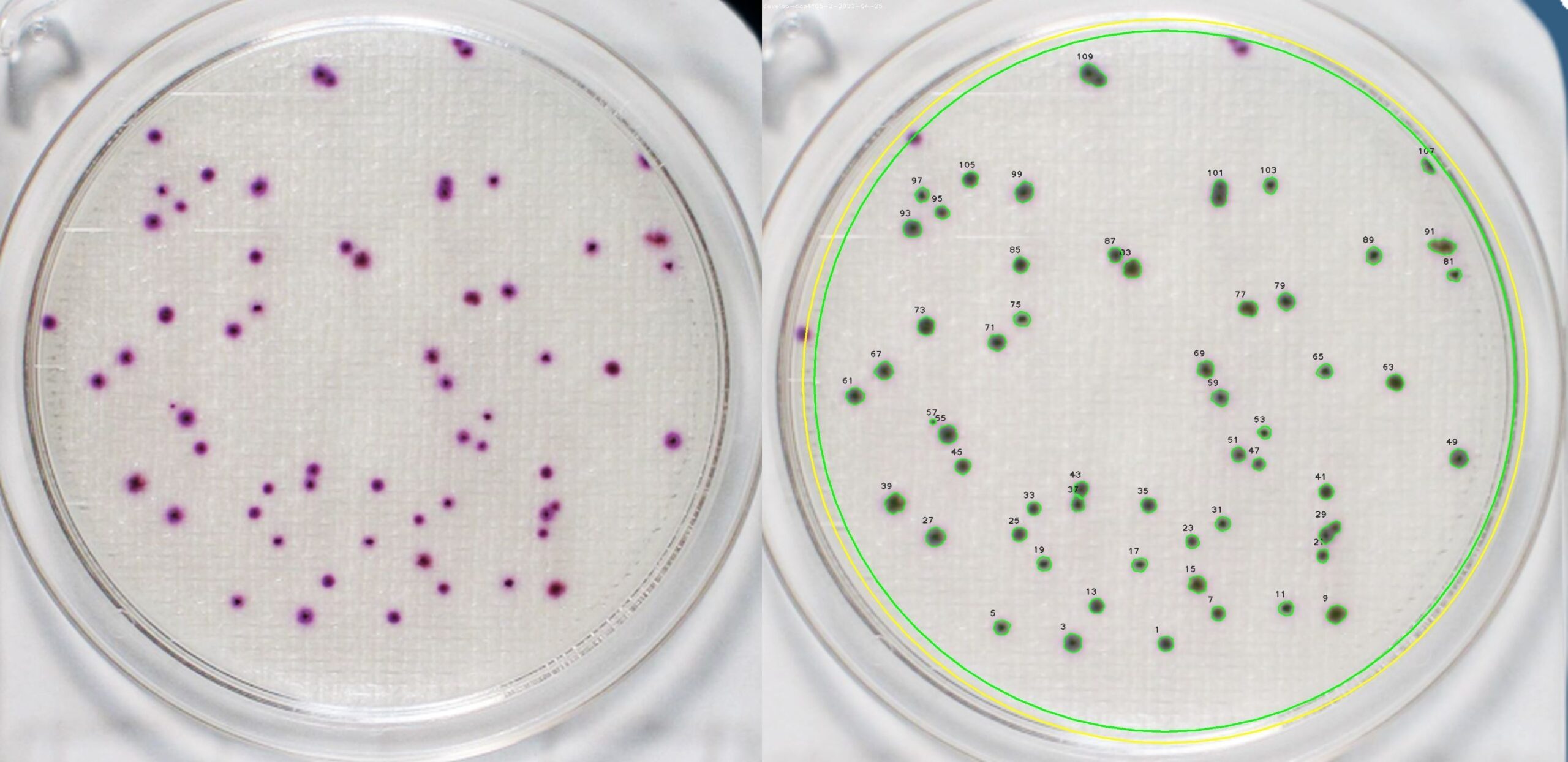CFU Counting Software: The benefits of a CFU counter app

The future has arrived for laboratories spending a lot of time counting colonies. Time wasted aside, there is so much room for error when it comes to this process that a CFU counting software can be a huge asset in your lab. Or maybe you can rely on your agar plates manufacturer to provide this for you – in which case you’ll simply scan the QR code on the back on your plate and use the app to do the automated counting almost instantly. If you’re not clear on the process or its benefits to you, you’ll find everything you need to understand better here.
Download here for free our comprehensive PDF Guide (19 pages) on How to Count Colonies on Agar Plates!
Understanding CFUs
You may not need an introduction, in which case you can just skip this section. For those who do, though, here it is.
CFU stands, of course, for colony forming units. When bacteria grows, as it tends to do, it typically grows in colonies. Still, because scientists cannot be sure that what appears to be a colony of bacteria is actually the result of a single bacterium growing, spreading, and forming a colony, we refer instead to these growths as colony forming units, or CFUs.
The Purpose of CFU Counting
We count CFUs to understand their basic functions. When we count colony forming units, we gain insight into how strong a bacteria strain is and how quickly it will spread, which then allows us to make decisions about treatments.
This same process holds true for good bacteria.
The more we understand how the good bacteria in the human gut behave, or even how the bacteria we use to create probiotic foods and beverages function, the more well-equipped we are to utilize various tools at our disposal to fight bad bacteria and encourage good bacteria.
Indeed, current cutting-edge technology is finding that bad bacteria is often roundly defeated not just by antibiotics but by good bacteria.
Studying bacteria in microbiology has informed us of the power of having a gut filled with rich, essential, happy bacteria that will fight off any number of invaders.
The future of medicine may very well point to human health as preventative rather than defensive, and when it must be defensive, we can use strategic and highly focused tools to fight.
All of this thanks to our ability to count colonies of bacteria as well as other cells.
How Do You Count Cell Colonies?
Traditionally, scientists have had to count colonies by hand.
The process included taking a sample of the bacteria and diluting it, usually by a ratio of 10:1, filtered water to bacteria. Often, the sample must be diluted at least once more, again at a 10:1 ratio.
We dilute the samples because bacteria grow quickly and spread rapidly. Attempting to view a pure sample on an agar plate under a microscope would be a mess of chaos. It would be virtually impossible to distinguish among CFUs and therefore also impossible to measure growth and strength.
Then, once we have diluted the sample, you’ll use a cotton swab to get a sample of the diluted bacteria and swipe the culture onto the agar plate in the Petri dish. You’ll swipe in a tight zig-zagging pattern that ensures you’ve covered the entire plate. Then, you’ll turn the plate 90 degrees and swipe again in the same way, from edge to edge.
This approach to culturing the agar will ensure you completely cover the surface with the bacterial sample.
Finally, you can place the lid on the Petri dish and flip the dish upside down.
From this perspective, you will be able to see the CFUs as they grow. You will count only what you can see with the naked eye and mark each CFU with a black permanent marker on the dish.
Then, you can measure growth over time.
CFU Counting Software
It sounds simple, right? The problem is that quite often the naked eye makes mistakes.
We mistake two colonies for one.
We miss smaller CFUs.
And every error we make interrupts the flow of scientific work. It interferes with our ability to understand what we are investigating, and it slows down our research.
Not to mention the fact that human CFU counting is in itself slow by nature. It has to be if we hope humans will catch every single colony forming unit developing on the agar.
CFU counting software has the ability to solve all of these problems.
It is powered by artificial intelligence and image analysis software to view an image uploaded to an application and immediately identify the number of colonies.
It is in areas like these where AI can really come in handy.

The Oculyze Colony Counter
One of the biggest problems with a CFU counting software lies in flawed design. If you do a brief internet search, you will find complaints about some of the most popular CFU counting applications on the market.
Oculyze has come onto the market to offer a more intelligently designed and extremely accurate colony counting software. We’ve partnered up with agar plates producers to provide the simplest process and solution for lab people.
Once you’ve swabbed your culture and you’re ready to begin counting, you simply have to:
- Scan the QR code that came with the pre-poured plate or the dehydrated agar.
- Immediately, the Oculyze Web App (no installation required) gets loaded with the image recognition tailored to the specific type of plate being analyzed.
- Take an image with your smartphone, tablet, or desktop PC with an attached camera. The results are shown in less than a second.
You can read more about this on our Colony Counter page. And next time you talk to your agar plates distributor, ask them about the possibility of integrating this service.
You can also Test our Colony Counter completely free of charge and with no commitment to purchase.
Just please note that the recognition provided here is solely for demonstration purposes and may not accurately represent the performance of our product. Our customers receive customized recognitions tailored to their specific needs, which ensures high levels of accuracy for their plates.
In the end, we are much better off leveraging AI to do the small, mundane tasks typically slow and riddled with human error. When we do, we free up our time to take on more important tasks vital to health and human services.
Oculyze is here to help you do just that.
Sources:


